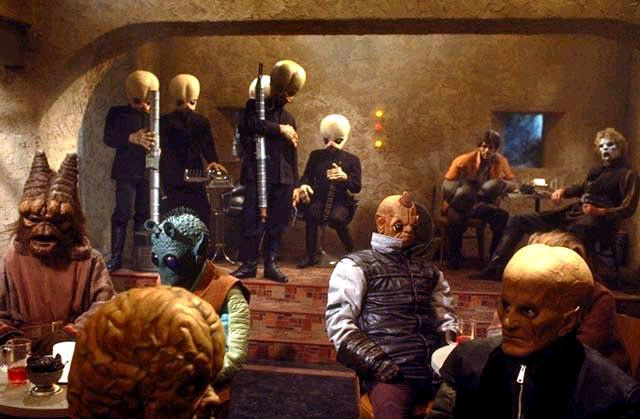Florida Tech Professor on Star Wars: Lightsaber? No Way; Cantina Aliens? Yes!
As ‘The Force Awakens,’ A Look at Myths, Realities
With the release of Star Wars: The Force Awakens on Dec. 18, fans will return to the galactic worlds inhabited by Jedi warriors, storm troopers, droids and wookiees and enlivened with new battles between X-Wing and TIE fighters in laser-spewing pursuit.
But will we ever see Death Stars, interstellar combat and clashing lightsabers anywhere beyond the silver screen? Not likely, said Dan Batcheldor, an astrophysicist and head of the Department of Physics and Space Sciences at Florida Institute of Technology in Melbourne, Fla.
“The stuff that is wrong about the science in Star Wars greatly outweighs the stuff that is right about the science,” he said.
Take the lightsaber: “You wouldn’t see a beam of light cut through the air because a laser travels at the speed of light. You would see where that laser hit, but you wouldn’t actually see a pulse of light because that would mean it traveled at a speed significantly less than the speed of light,” he said.
The world of Star Wars may have scientific flaws, but the good news for fanatics is that Batcheldor believes the famous cantina scene from the first Star Wars movie that featured a gaggle of rough and ready aliens is, in fact, possible.
“It’s only a statistical argument right now, but I think scientists in general will be very surprised if Earth is the only place that life has developed in our galaxy,” he said. “There are more planets in our galaxies than there are stars.”
This is a relatively new discovery: From 2009 to 2013, the Kepler spacecraft was trained on one small patch of sky. Scientist found that tiny fluctuations of light in front of the stars were indications of planets, and Kepler observed thousands of stars with a tell-tale pattern.
“You take those statistics and you multiply by how many stars there are in the galaxy, it turns out that pretty much every star with the exception of some really big, crazy stars are going to have multiple planets around them,” Batcheldor said. The next step is to figure out which ones have water and a protective atmosphere, because life is most likely on those planets.
“There very well could be a range of intelligent life like you see that in the Star Wars universe,” Batcheldor said.
To schedule an interview with Batcheldor, contact University News Bureau Chief Adam Lowenstein at adam@fit.edu or 321-674-8964.
###





